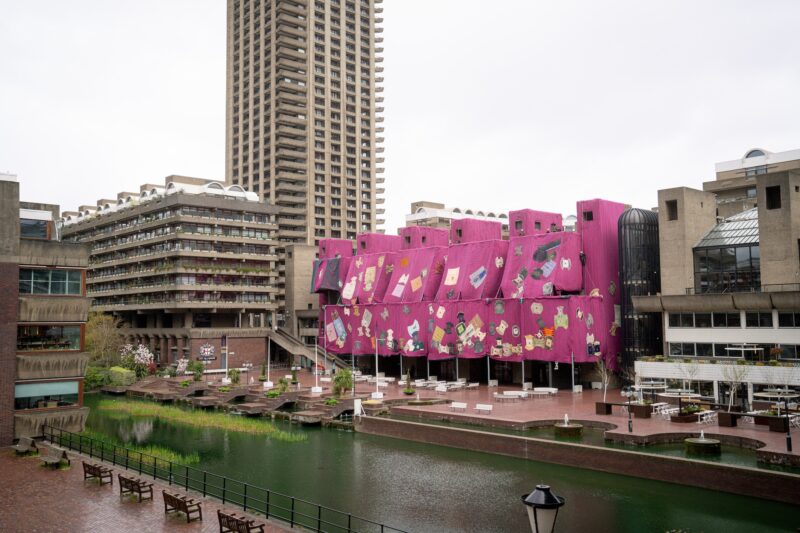To coincide with the UN Climate Change Conference (COP26), the Design Museum will host an exhibition showing what design can do to tackle the critical problem of waste and its environmental consequences across the globe.

The exhibition showcases the visionary designers that are reinventing our relationship with waste, including contributions from Formafantasma, Stella McCartney, The Ellen MacArthur Foundation, Fernando Laposse, Bethany Williams, Phoebe English, Natsai Audrey Chieza and more. For the first time, exhibition visitors will be able to see new commissions that confront the waste problem including, a largescale art installation by Ibrahim Mahama made from e-waste in Ghana.
“We must face the problem of waste – we can no longer ignore what happens to things when we get rid of them. Instead of thinking of objects as things that have an end life, this exhibition proposes that they can have many lives. This is not just an exhibition it is a campaign #EndTheWasteAge, and we all have an active part in our future. The exhibition will show design is at the forefront of sustainable solutions.”
Gemma Curtin, Waste Age Curator

The first section of the exhibition ‘Peak Waste’ confronts visitors with the epic scale of global waste – making the case for urgent change. Shining a light on how mass production and our consumption habits contribute to growing landfills, visitors will be able to follow their rubbish across the globe through a large-scale waste tracker. The exhibition examines how we arrived at today’s throwaway culture, one in which 80% of products are thrown away in their first six months of life.

From then on, the exhibition focuses on solutions and new thinking. Moving into ‘Precious Waste’, visitors will learn more about the raw materials used in everyday products through object deconstructions by Studio Drift as well as the designers leading the way in recycling waste into new resources. These include sustainable materials in fashion by Stella McCartney, Adidas and Bethany Williams; to construction materials such as the K Briq by Kenoteq, which uses almost 90% less carbon than a regular brick, and new lives for plastic like the S-1500 chair by Snohetta, made from discarded fishing nets.
In ‘Post Waste’ discover proposals for new circular methods of production, with a focus on grown rather than extracted materials. Visitors will see experimental designs that introduce a whole new world of clothing, products and packaging made from natural materials such as coconut, algae, and corn husks. Fernando Laposse’s The Dogs bench uses raw fibres from the leaves of the Agave plant and The Blast Studio’s 3D printed column, made with waste and the fungus Mycelium, promotes a no-waste architecture.

Lovely Trash Column by Blast studio — a 3D printed column made from mycelium fed and grown on coffee cup waste. Image by Blast
This section also delves into how we can change our systems and behaviours to consume less. It examines models of sharing, labelling, and design-for-disassembly, which can help objects last for longer, be repaired and significantly reduce how much is manufactured and discarded. From local solutions like Kamikatsu, a Zero Waste Town in Japan to a display of tool sharing libraries across the world, the exhibition will promote living without waste and imagines a more resourceful world for future generations.
“Design has helped create our wasteful society, and it will be crucial in building a cleaner future. That means rethinking the lifestyles and materials that do so much damage. This optimistic exhibition demonstrates the energy and ingenuity being applied to the challenge – and we want it to mark a turning point. There is so much we can do, but it begins with understanding our waste.”
Justin McGuirk, Chief Curator and Waste Age Co-Curator
As part of the curatorial process, the Design Museum have engaged creative consultancy, Urge Collective’s Sophie Thomas and Alexie Sommer with data analyst Ralf Waterfield to conduct an environmental audit of the Waste Age exhibition. This will enable the museum to communicate the environmental impact of the exhibition clearly, engaging designers, museum staff, partners and visitors in discussions to find the solutions in reducing waste and associated impact.







